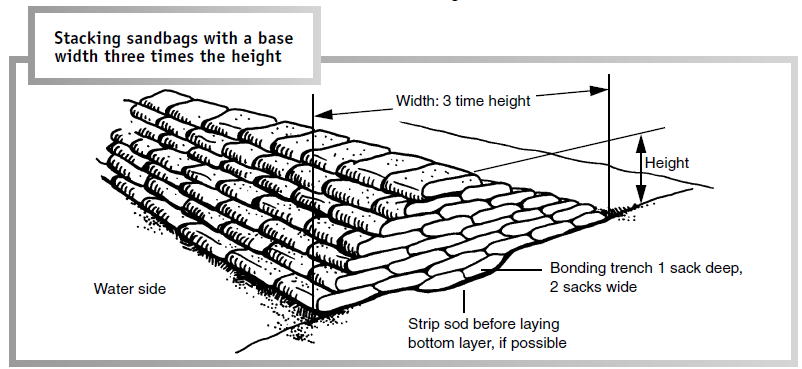Gabion Wall Ring
|
Tags | |
UUID | c3a5fe5a-36bc-11ee-b65f-bc764e203090 |
The Gabion Wall Ring calculator computes the volume to fill a polygon ring gabion wall (see diagram) based on the dimensions and number of sides. This can be used to compute the volume of material for a Gabion wall including the volume of stone (V) and the surface areas of wire framing.
INSTRUCTION: Choose units and enter the following:
- (r1) Outer Radius
- (r2) Inner Radius
- (h) Height
- (n) Number of Sides (e.g. 10 for decagon)
Gabion Wall Ring (GWR): The calculator returns the following:
- (V) Volume of Stone to fill Gabion Wall Ring in cubic yards.
- (A) Surface Area of Gabion Ring in feet.
- (S1) Outer Side Length in Feet and Inches.
- (S2) Inner Side Length in Feet and Inches.
- (RD) Ring Depth between Polygons
- (TZV) Volume of 1 Trapezoid Column in cubic yards.
- (TZA) Surface Area of a Trapezoid Column in square feet.
- (TZAn) Combined Surface Area of n Trapezoid Columns in square feet.
The values with units can be automatically converted to compatible units via the pull-down menu.
The Math / Science
A Gabion Wall is a wire frame filled with stone. Gabion is Italian for "large cage". It's an increasingly popular ecologically superior alternative to concrete structures. This calculator computes the total volume of stone to go into the wire frame. It also computes the volume of stone to go into trapezoid sections and the surface area of those individual frames. In this way the sections can be constructed individually an the polygon ring can be erected in pieces.
The basic shape is a polygon within a polygon where the outer edge is defined by the number of sides of the polygon and the radius that goes around the outside of the polygon. The interior of the polygon is defined by the same number of sides and the radius within the polygon..
A Retention Wall is a vertical or diagonal wall structure used to retain soil or water at an elevated height on one side of the wall, keeping it above the natural level that the soil or water would achieve. Retention walls are used to create relatively flat areas such as roads or gardens that are cut into a hillside. Retention walls are also used as levees to keep water out of an area. The soil and moisture on one side of the wall exerts pressure (stress) on the wall. This is why the materials used must be appropriate for the application in both density and porosity.

Retention Wall Calculator Functions
Collections
- Comments
- Attachments
- Stats
No comments |

